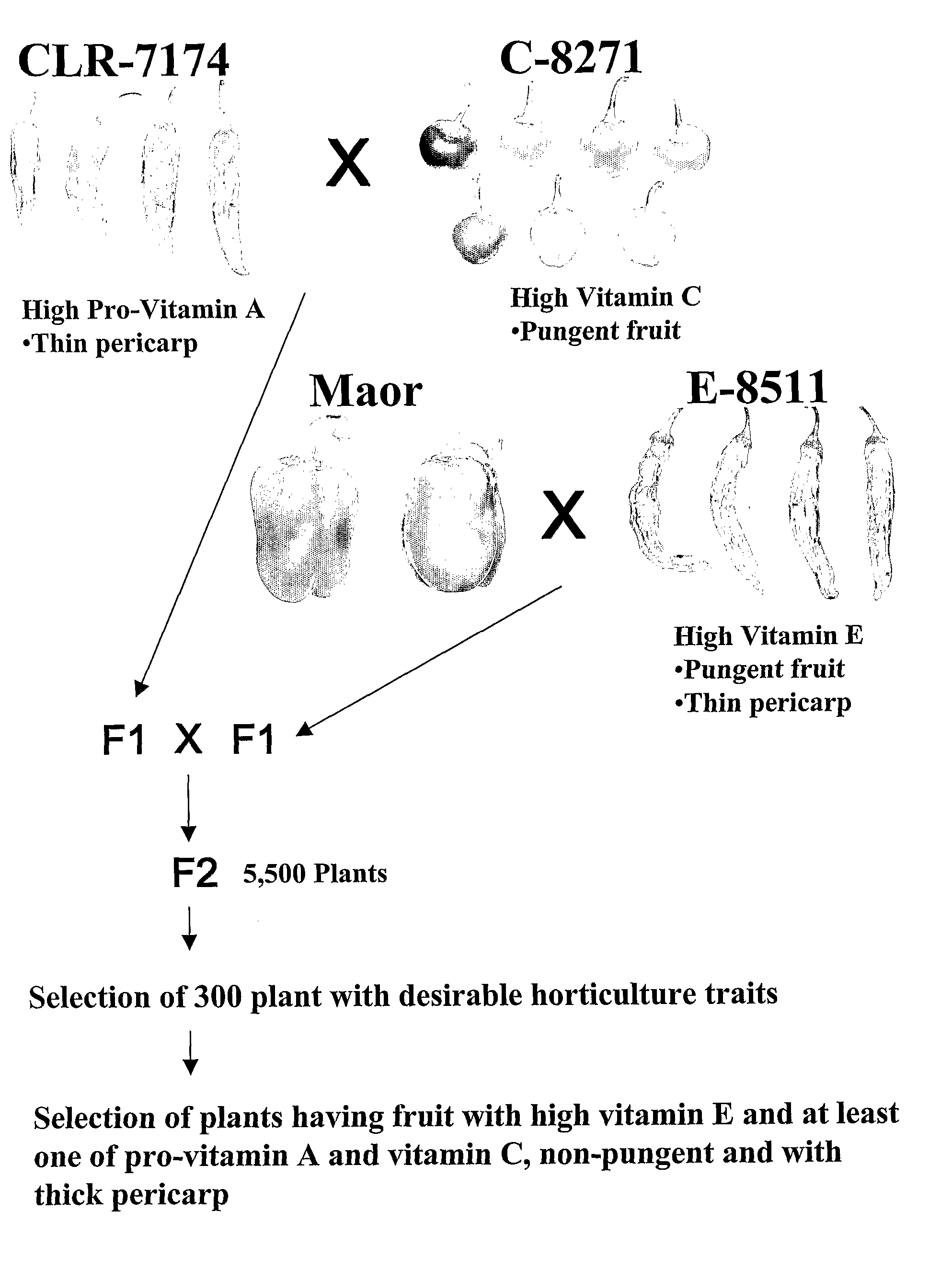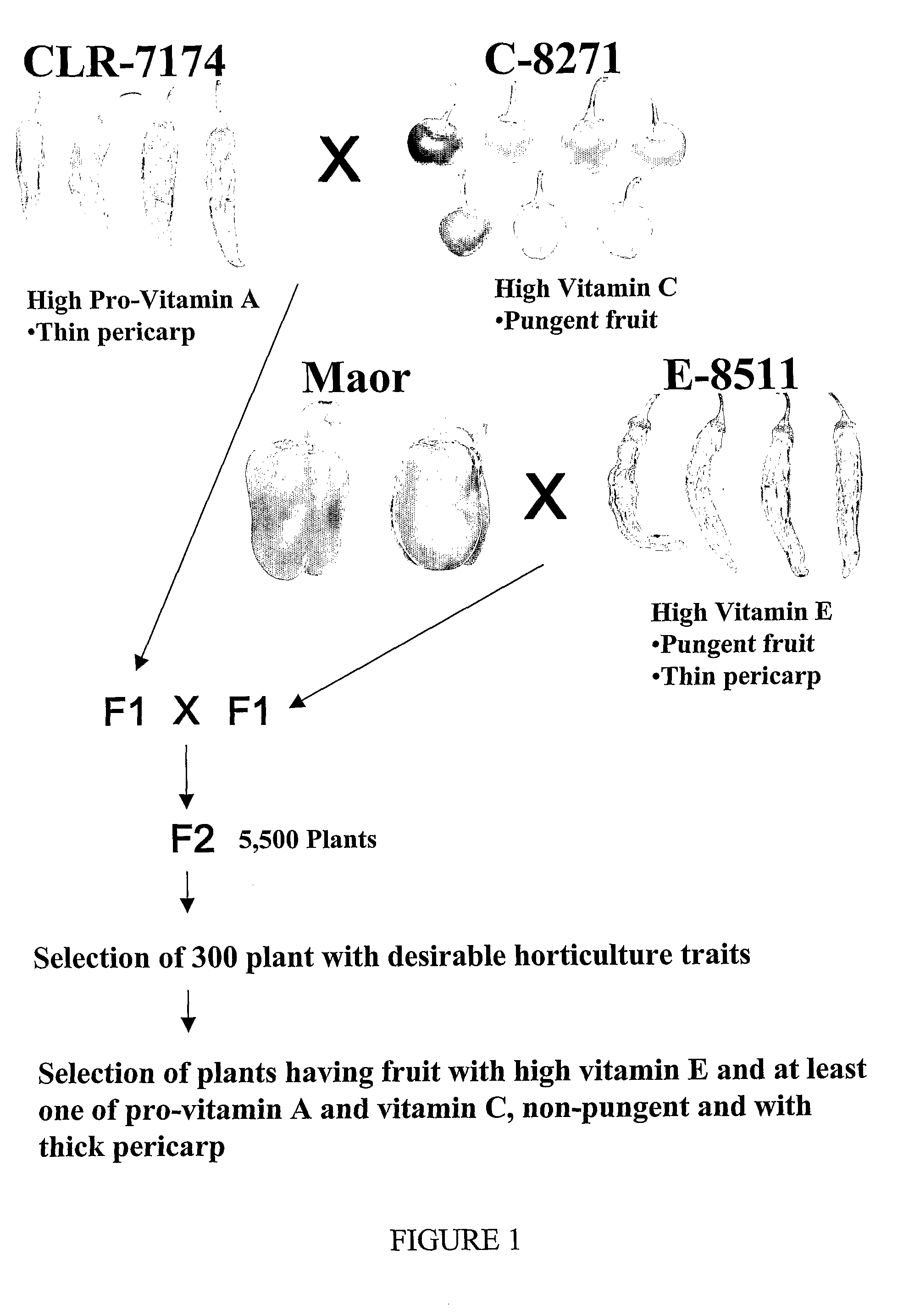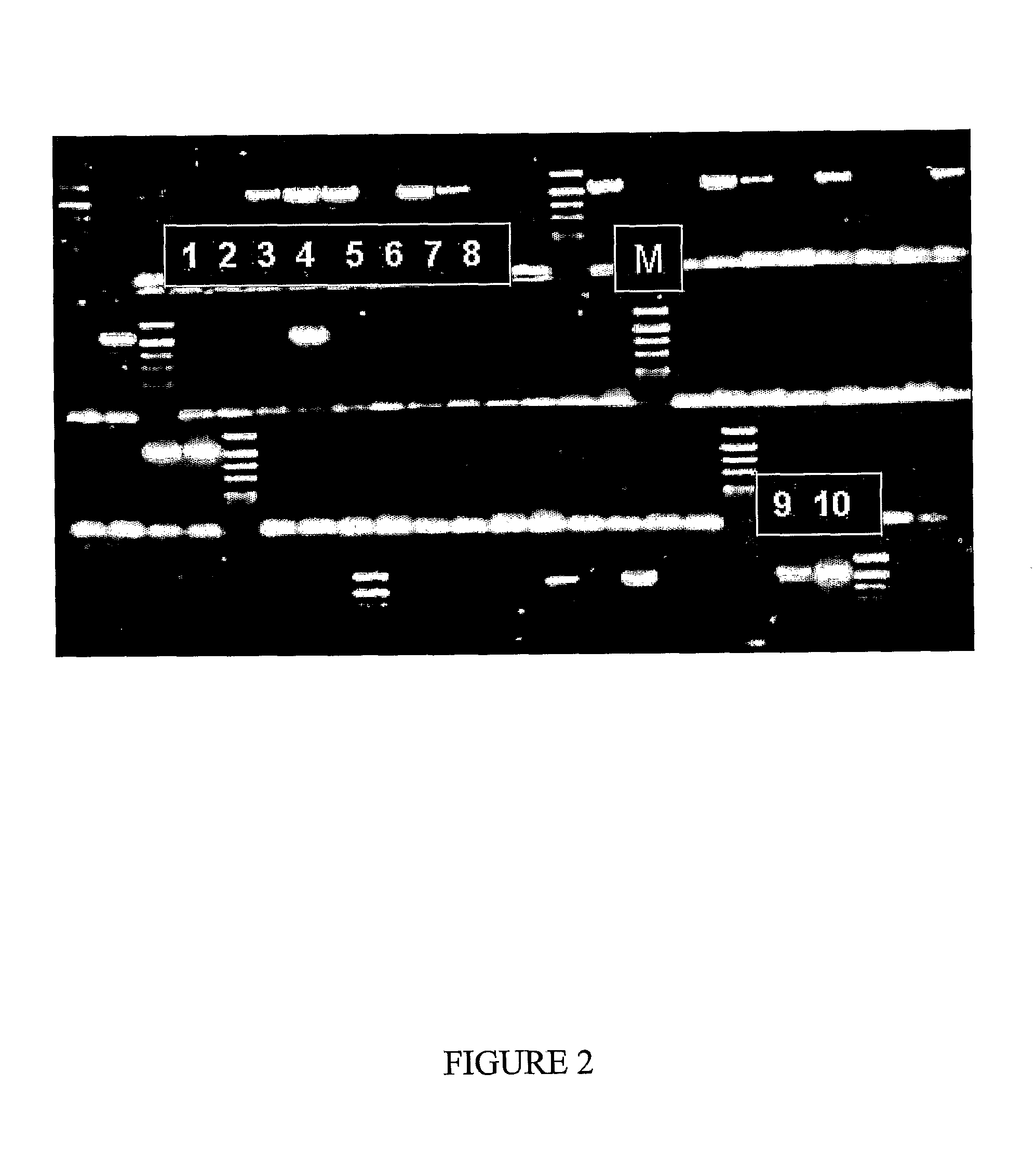Pepper Plants Having Fruit With Altered Vitamin Content
a technology of vitamin content and pepper plants, applied in the field of pepper plants having fruit with altered vitamin content, can solve the problems of toxic symptoms, reduced bone mineral density, and inability of mammals to manufacture or synthesize vitamins
- Summary
- Abstract
- Description
- Claims
- Application Information
AI Technical Summary
Benefits of technology
Problems solved by technology
Method used
Image
Examples
example 1
Selection of Pepper Plant Having Elevated Vitamin Concentrations
[0113]Several hundred plants from populations, introductions, cultivars and varieties of pepper, mostly from the species Capsicum annum and also from other species including C. frutescens, C. chinense, C. baccatum and C. chacoense were screened. The plants were analyzed for a spectrum of carotenoids including, specifically, β-carotene, and for the concentration of vitamin C and vitamin E. Three breeding strains were developed through controlled selfing of several generations of plants having fruit rich in at least one of vitamin E, carotenoids and vitamin C, as follows:
[0114]A) Strain E-8511, a paprika type pepper originating from a segregating population of a breeding program aimed at the development of relatively high stability of the red color of paprika. Its vitamin E content was the highest among all the populations analyzed, about 12.5 mg / 100 g fresh weight of the fruit pericarp. The fruit had a thin pericarp and ...
example 2
Selection of Plants Having Non-Pungent Fruit Using Molecular DNA Marker
[0123]The presence or absence of pungency is controlled by a single dominant gene Pun1 (Stewart C et al., supra). Plants that are homozygous recessive to this gene (pun1 / pun1) do not develop pungency in the fruit. The recessive gene has a 2.5 kb deletion compared to the dominant gene, that spans from the promoter to the first exon of the gene. The marker used is a product of about 700 bp of a PCR reaction, using the following primers:
(SEQ ID NO:1)Forward (PT-1): 5′-GACCACGGGTCTACGGATAGACCTC-3′(SEQ ID NO:2)Backward (PT-2): 5′-CAAACCTCGCCTTCGTGACAATCCCA-3′.
[0124]The resulted DNA fragment of about 700 bp is located within the promoter of the Pun1 gene, and thus only plants having pungent pepper fruit will show the expected 700 bp fragment (FIG. 2).
[0125]DNA was isolated from examined plants by a standard method, as is known in the art, and subjected to a PCR reaction using the above-identified primers under the foll...
example 3
Measurement of Vitamin Concentrations
Determination of Carotenoid Content in Pepper Fruit
[0130]Saponification: Red pepper fruit to be examined were freeze-dried and the dry material was grounded to a powder using a coffee machine. 30 mg of the freeze-dried powder were introduced into 7.5 ml ethanol solution containing 2% BHT and 1.25 ml KOH 60%. The mixture was incubated at 37° C. for 30 minutes with the introduction of N2 gas into the solution.
[0131]Extraction: 5 ml H2O was added to the saponified mixture, and the mixture was incubated for 10 min. in room temperature. 5-ml hexane were then added, the mixture was stirred, and than left until the hexane and the water fractions separated.
[0132]The hexane fraction containing the extracted carotenoids was then collected. The extraction procedure was repeated 5 times until no more color (i.e., no visible amount of carotenoids) was detected. The residual H2O in the hexane fraction was dried with sodium sulfate. The hexane was evaporated to...
PUM
 Login to View More
Login to View More Abstract
Description
Claims
Application Information
 Login to View More
Login to View More - R&D
- Intellectual Property
- Life Sciences
- Materials
- Tech Scout
- Unparalleled Data Quality
- Higher Quality Content
- 60% Fewer Hallucinations
Browse by: Latest US Patents, China's latest patents, Technical Efficacy Thesaurus, Application Domain, Technology Topic, Popular Technical Reports.
© 2025 PatSnap. All rights reserved.Legal|Privacy policy|Modern Slavery Act Transparency Statement|Sitemap|About US| Contact US: help@patsnap.com



